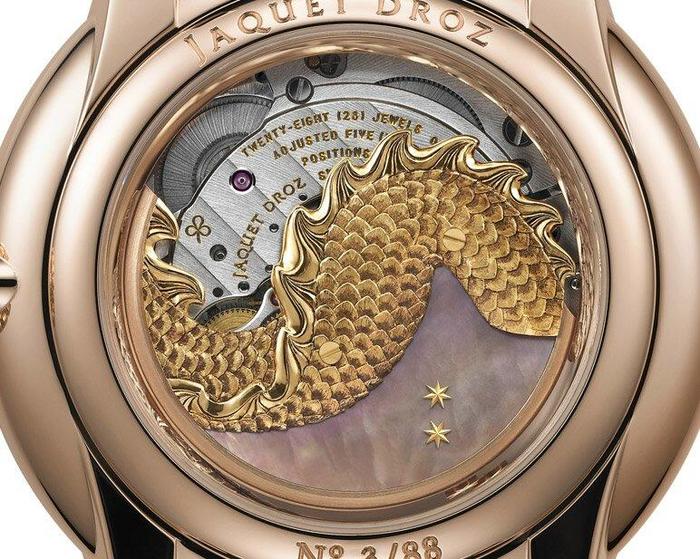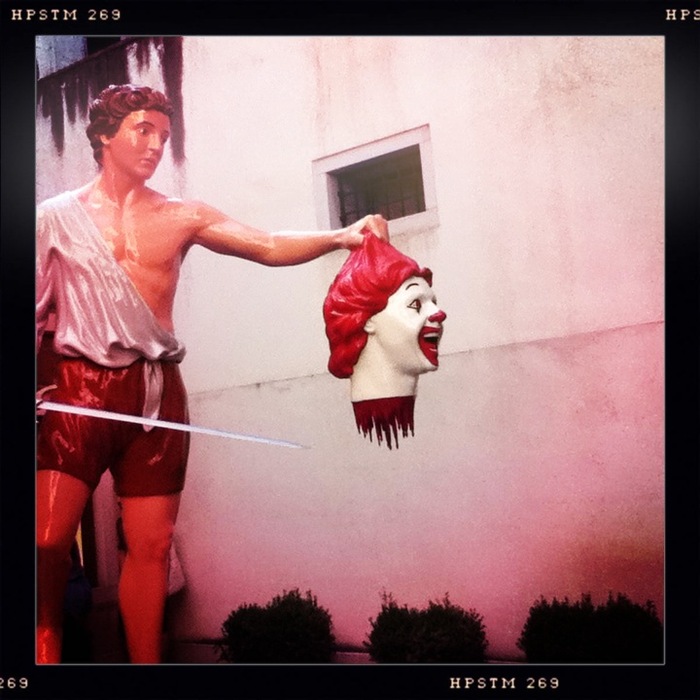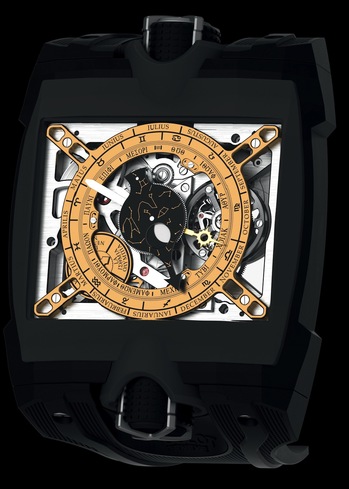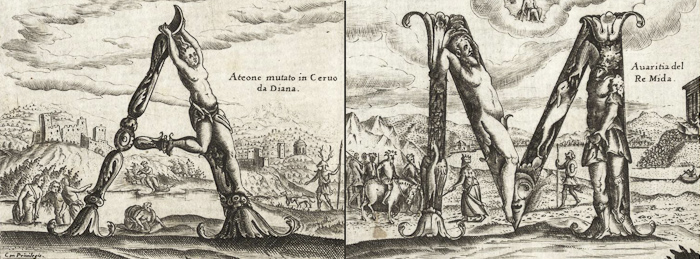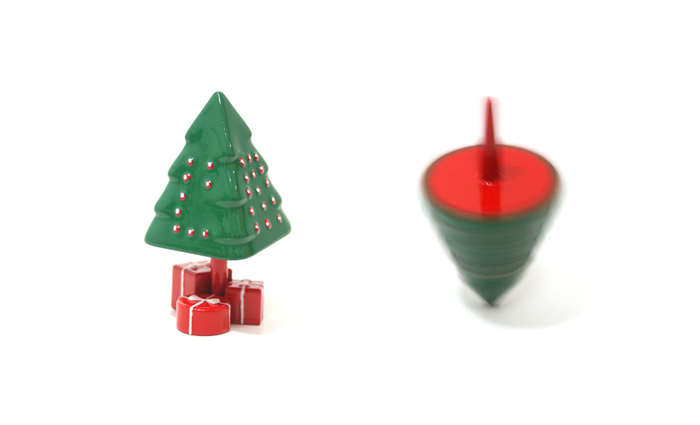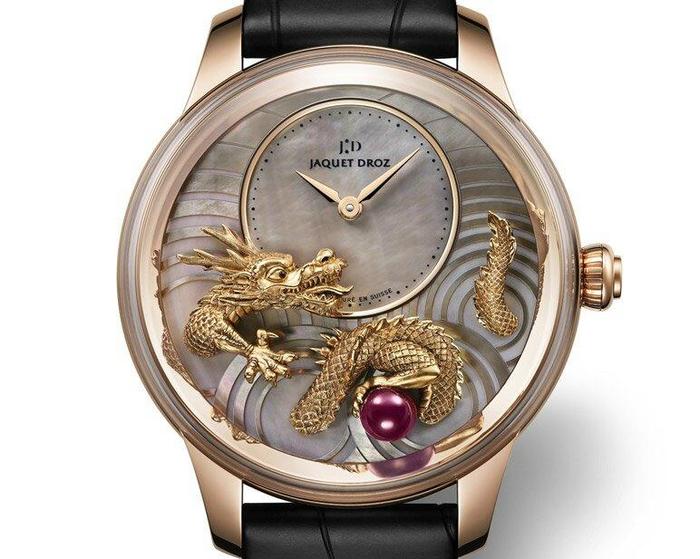
I don't like inlaid rotors as a rule, but this one isn't terrible. It is overdone, but does a nice job of following with the design of the front, pretending to be the remainder of the lizard-like body of the dragon. The 2 stars on the mother-of-pearl are something of a signature design element for JD. The movement is the usual F.Piguet 1150 with JD modifications, basically moving the time dial up.

